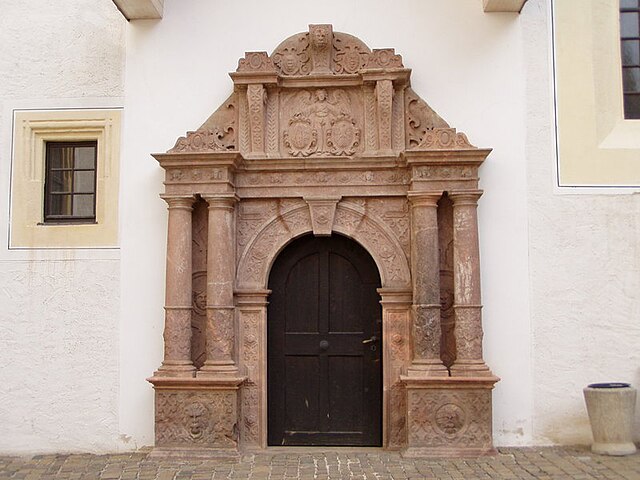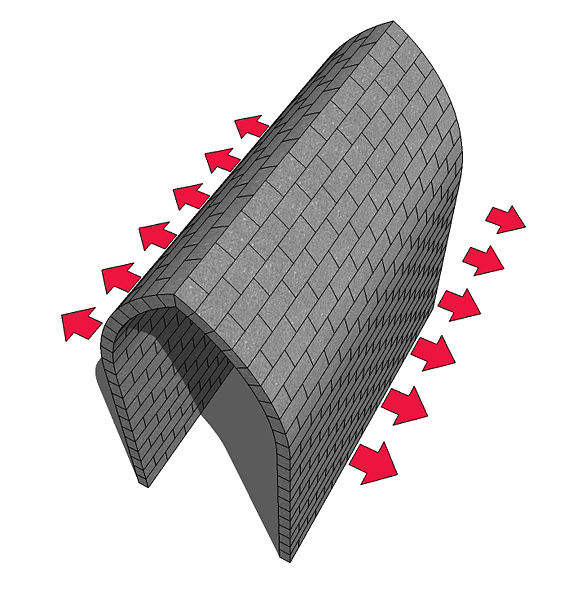A keystone is the wedge-shaped stone at the apex of a masonry arch or typically round-shaped one at the apex of a vault. In both cases it is the final piece placed during construction and locks all the stones into position, allowing the arch or vault to bear weight. In arches and vaults keystones are often enlarged beyond the structural requirements and decorated. A variant in domes and crowning vaults is a lantern. A portion of the arch surrounding the keystone is called a crown.
Dropped keystone at Colditz Castle
Keystone from the palazzo Borgazzi (Milan, Italy)
Keystone much enlarged for decorative effect, and carrying a coat of arms, Barcelona
The York Minster Chapter House rib-vault ceiling with central and peripheral keystones
In architecture, a vault is a self-supporting arched form, usually of stone or brick, serving to cover a space with a ceiling or roof. As in building an arch, a temporary support is needed while rings of voussoirs are constructed and the rings placed in position. Until the topmost voussoir, the keystone, is positioned, the vault is not self-supporting. Where timber is easily obtained, this temporary support is provided by centering consisting of a framed truss with a semicircular or segmental head, which supports the voussoirs until the ring of the whole arch is completed.
Gothic rib vault ceiling of the Saint-Séverin church in Paris
In a pitched-brick vault the bricks lean (are pitched) against an existing wall.
St Paul's Cathedral Choir looking east, London
Pointed barrel vault showing direction of lateral forces








